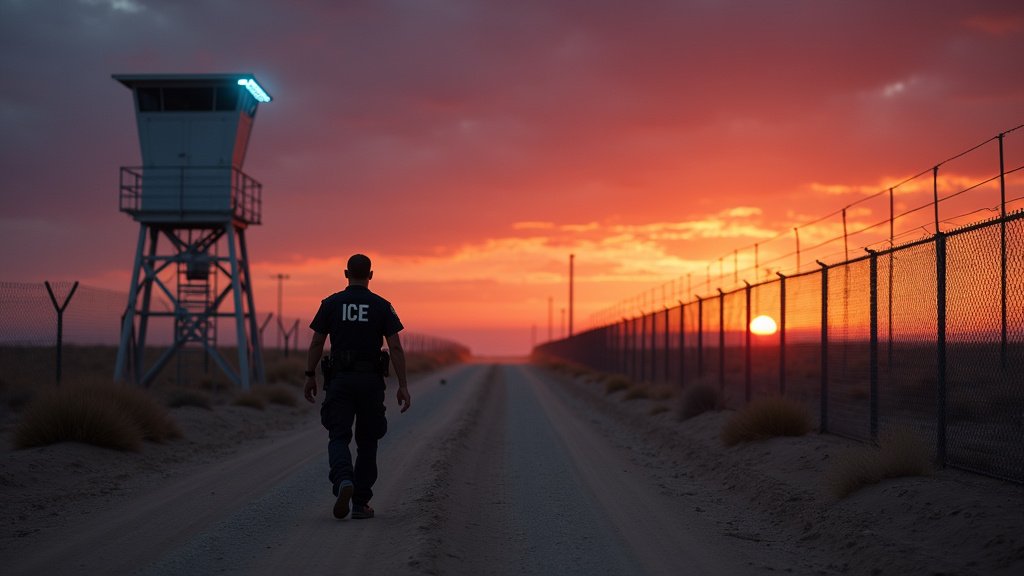U.S. Customs and Border Protection (CBP) data indicates a significant downturn in border crossings, with June marking the lowest number of encounters in recorded history. Nationwide, CBP reported 25,228 encounters, a figure that encompasses all interactions with individuals at the border, including apprehensions. A particularly striking aspect of these statistics is the historical low in apprehensions, which reached 8,024 across the entire country. This number reflects the individuals taken into custody after attempting to enter the U.S. illegally, underscoring the effectiveness of current enforcement strategies. The data suggests a notable shift in the dynamics of border security, with fewer individuals attempting to cross the border without authorization.
Southern Border Apprehensions Reach New Lows
The southern border, a focal point of immigration debates and security measures, witnessed a particularly dramatic decline in apprehensions. In June, CBP recorded only 6,072 apprehensions along the southern border. This figure represents a 15% decrease compared to the previous record low set in March, highlighting a substantial reduction in illegal border crossings in that area. The marked decrease suggests that existing border control measures, including increased surveillance, physical barriers, and personnel deployments, are yielding considerable results. This data point is likely to fuel ongoing discussions about border security policies and their impact on both the flow of migrants and the operational demands placed on CBP.
Increased Enforcement and National Defense Area Designation
The U.S. government has implemented a range of measures aimed at strengthening border security and deterring illegal immigration. One notable action was the designation of a National Defense Area along the U.S.-Mexico border. At the request of President Donald Trump, the U.S. Department of Defense signed an order on May 8, 2025, declaring 110,000 acres of land in New Mexico as a National Defense Area. This designation allows for increased military presence and operations in the area, further reinforcing security efforts and potentially deterring unauthorized border crossings. Such actions underscore a commitment to bolstering border defenses and controlling the flow of people and goods across the border. The creation of the National Defense Area is likely to affect land use and environmental considerations in the specified region, requiring careful management and oversight.
Assaults on ICE Agents Surge
Alongside the initiatives to control border crossings, authorities have also noted an increase in the challenges faced by law enforcement agencies. Earlier Wednesday, DHS Secretary Kristi Noem announced an 830% increase in assaults on ICE agents compared to the previous year. This surge in violent incidents targeting ICE personnel raises concerns about the safety and security of those working to enforce immigration laws. The increase in assaults could be attributed to a variety of factors, including increased hostility towards immigration enforcement policies, heightened tensions at the border, and an increase in the number of agents deployed in dangerous environments. The rise in assaults underscores the need for increased protections and resources for ICE agents and potentially a reevaluation of the strategies and tactics used in the field.
Contextualizing the Data
The figures released by CBP and the Department of Homeland Security (DHS) are likely to become central to ongoing policy debates on immigration. The data will likely be dissected by policymakers, analysts, and advocacy groups to gauge the effectiveness of existing policies and the need for adjustments. The significant decrease in apprehensions could be viewed as evidence of success by those supporting stricter border controls. In contrast, critics may argue that such declines result from harsh enforcement policies that have unintended consequences, such as forcing migrants into more dangerous routes or discouraging them from seeking asylum. It is important to note that various factors can influence border crossing statistics, including seasonal variations, economic conditions in the home countries of migrants, and changes in enforcement strategies. Therefore, a comprehensive understanding of these trends requires careful consideration of multiple data points and broader socioeconomic factors.
Long-Term Implications
The sustained decrease in border crossings, coupled with the measures to enhance border security, has significant implications for the region and the nation as a whole. The reduction in illegal immigration can potentially alleviate the strain on social services, law enforcement, and border communities. Furthermore, decreased illegal crossings could impact the demand for human smuggling and trafficking, while also affecting the composition and demographics of the U.S. population. The long-term impact will depend on various factors, including the economic conditions in both the U.S. and other countries, changes in immigration policies, and the willingness of individuals to seek legal pathways to enter the country. The effectiveness of the policies will be continuously evaluated and revised according to evolving circumstances.
Looking Ahead
As policymakers and law enforcement officials analyze the latest data, they will likely consider adjustments to existing policies. It is probable that the emphasis on border security and enforcement will persist, even as the discussions around immigration reform continue. Additionally, the increased incidents of assault on ICE agents will require measures to protect these officers and ensure they have the support they need to carry out their duties safely. The data released provides valuable insights into the evolving dynamics of border security and highlights the complexities and challenges associated with managing the flow of people across international borders. The interplay between security concerns, human rights, and international relations will remain at the forefront of the debate surrounding immigration and border control.






